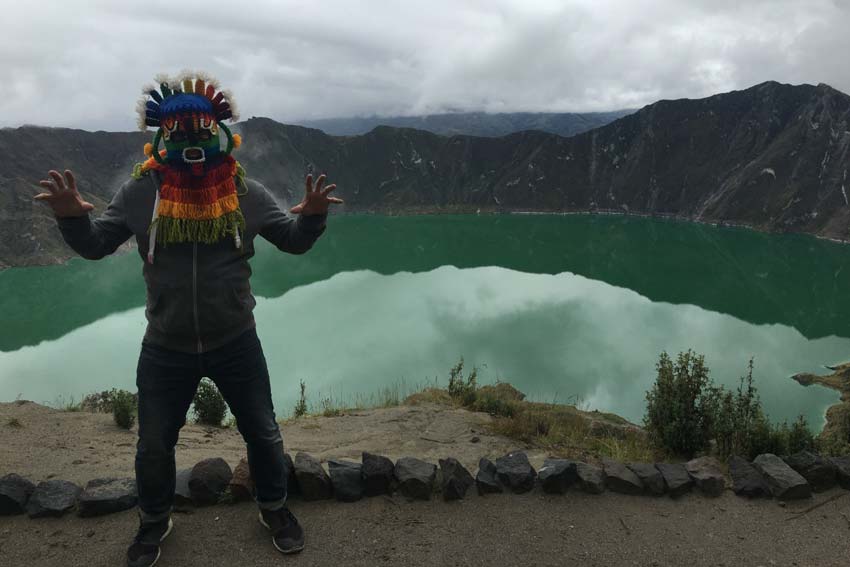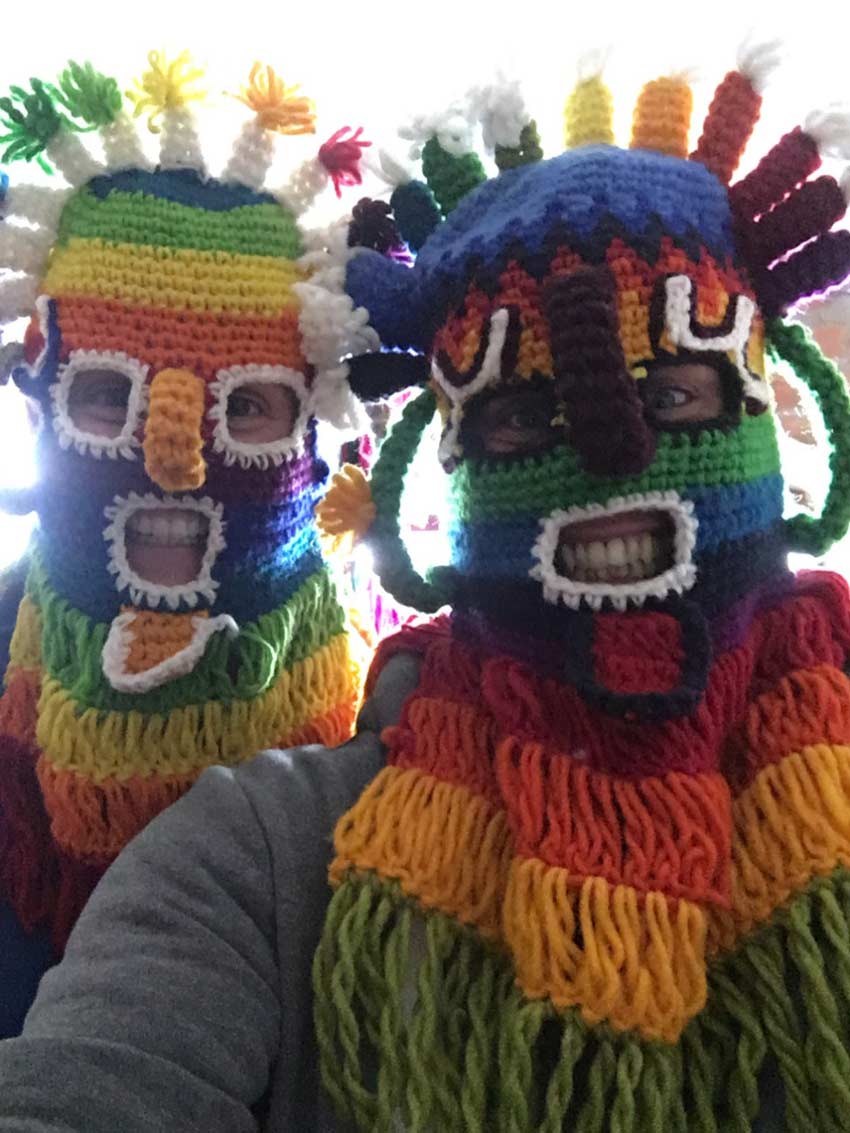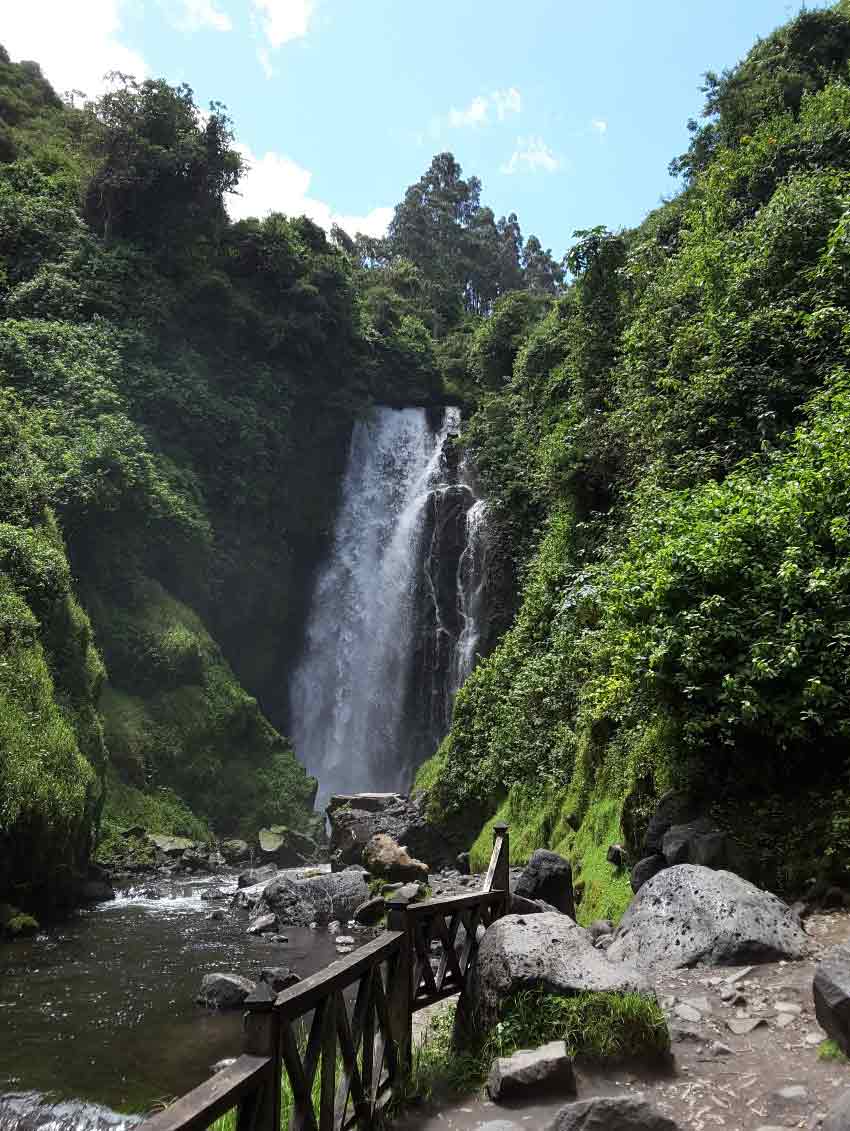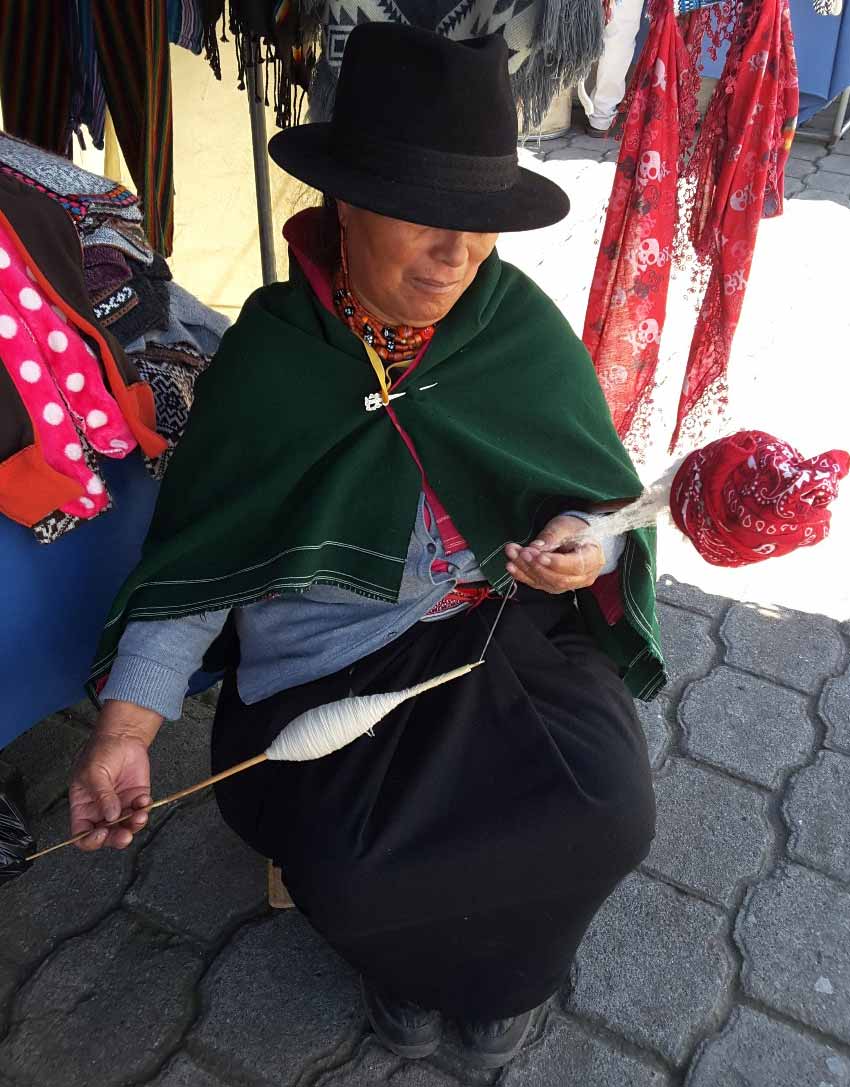
Inti Raymi, which means “sun festival” in the Quechua language, was the Inca celebration of the northern solstice. To this day, it remains the most important annual event for Andean Indigenous cultures in the countries that formed the Incan empire, namely Peru, Ecuador, Bolivia, Chile and Argentina.
Inti Raymi celebrates the fertility of the Pachamama (Mother Earth) and gives thanks for the harvests. The festival also has a fundamental purpose that is not well known outside the Andean cultures, where it is seen as a celebration of the approach of light to Earth and, with it, the approach of the spiritual world. It is believed that, at this time, it is possible to share space and time with ayakuna (spirits) through various activities, such as dancing, eating certain food, and wearing specific clothing. It is also seen as the best time to focus on magnifying or developing the presence of one’s personal spirit (aya), with the goal of entering the spiritual plane.
The spiritual plane is personified in the character of the Aya Huma, who plays a key role in the Inti Raymi celebrations. The Aya Huma wears a mask with two faces; one on the front and one on the back of the head. Many visitors are familiar with it from the knitted versions that are commonly sold as tourist souvenirs. When the Spaniards first arrived, they considered it a devil mask, but in fact the Aya Huma is a mythological Andean figure with a complex symbology that is often misunderstood to this day. Its name roughly translates as “energy head” and the two faces represent 360-degree vision, or wisdom. The role of the Aya Huma is to harmonize, heal, teach, and share.


Not surprisingly, the Spanish conquistadores considered Inti Raymi an unacceptably heathen festival and merged it with the Christian celebration honoring Saint John the Baptist. As a result, Inti Raymi is also referred to as the Fiesta de San Juan and includes some Catholic elements.
In Ecuador, Inti Raymi is celebrated all over the Sierra by indigenous people of Kichwa nationality. Making up the Kichwas are a number of different groups, each with its own customs. The Kichwas of Otavalo, for example, are famous for their weaving skills. Traditional dress varies between groups, but often features woolen shawls and ponchos, embroidered shirts and skirts, felt hats and beaded necklaces. Hair is usually long and braided. Many Andean Kichwas are small scale farmers (campesinos), growing crops such as corn, potatoes and beans or keeping cattle for milk. Others make a living with traditional handicrafts such as weaving, embroidery and jewelry making. Every group has its own specific dates and traditions for Inti Raymi, but the festivities generally take place in the days following June 21.
Many communities kick off the celebrations on June 22 with a cleansing ritual known as Armay Chishi, gathering to bathe in sacred lakes, rivers and waterfalls to eliminate negative energies accumulated during the previous year. Visitors are welcome to bathe and will certainly find it invigorating to be immersed in cold water on a chilly Andean morning!
For a less extreme way to participate, join the music and dancing that takes place in indigenous towns and villages across the Sierra. Every evening for the duration of the festivities, troupes of musicians roam the streets playing traditional instruments such as flutes, guitars and violins. Throwing in vocal exclamations such as “churay! churay!” and “kulun! kulun!”, the musicians inspire those around them into a dancing frenzy. The troupes, known as san juanitos, enter the homes of local residents, who form a circle of dancers around them. The revelry is intended to wake up the Pachamama, so that she will bestow her blessings upon the people.
During Inti Raymi and other Andean celebrations, meals are often eaten communally from a long strip of fabric on the ground in a tradition known as pampamesa. Food commonly eaten in this way includes the Sierran staples of corn, potatoes and pork.
To understand the significance of some of Ecuador’s best Inti Raymi destinations, it is helpful to know some Incan history. The Incas, or “Children of the Sun”, are thought to have descended from two great empires that both ended around 1100 AD: Tiwanaku, based around Lake Titicaca between Peru and Bolivia; and the Wari, who occupied the Cuzco area in Peru. The Incas made Cuzco their capital and began to conquer neighboring territories in around 1250 AD. By the 14th and 15th centuries they had built an empire that stretched from what is now northern Chile to the southern edge of present-day Ecuador.
In 1463 the Inca leader, Túpac Yupanqui, began the push into Ecuador from Peru. In the southern Sierra, the Inca armies met fierce resistance, notably from the Cañaris and Quitu-Caras. It wasn’t until Yupanqui’s son, Huayna Capac, continued his father’s campaign that the Incan Empire finally conquered these territories.
Huayna Capac chose to build the Empire’s northern capital where Cuenca is today. Modeled on Cuzco, the city was called Tumebamba and some of the ruins still stand today. Just outside the city, the invaders had enough respect for the vanquished Cañari to build a community together at Ingapirca, a complex with ceremonial, astronomical, political and administrative functions. It is thought that the Inca Temple of the Sun, which was built to complement the pre-existing Cañari Temple of the Moon, was used as a site for rituals and determining the agricultural and religious calendars, including the date of the most important event, Inti Raymi.
Both Tumebamba and Ingapirca are thought to have been largely destroyed shortly before the Spanish conquest, in a war between Huayna Capac’s sons, Atahualpa and Huáscar, in 1532. That same year, the arrival of the Spanish conquistadors coincided with the Inca’s weakest moment, divided as they were by war. The Spanish were able to defeat the Children of the Sun, putting an end to their 50-year reign in Ecuador.
Though only ruins remain of the rest of the complex, the Sun Temple still stands today at Ingapirca, which is one of the best places in the country to join in the Inti Raymi celebrations. More than a hundred indigenous groups from Ecuador and other Andean countries gather for traditional dancing, music, gastronomy and crafts fairs. Check the Facebook page @complejoingapircaoficial for more information.
Another wonderful place to celebrate Inti Raymi is the southern Sierran town of Saraguro and the surrounding rural villages. The Saraguros’ ancestors are believed to have been brought to Ecuador by the Incas from southern Peru and Bolivia. According to the Saraguros themselves, they are descended from members of Huayna Capac’s closest circle, sent to start a new colony that would adhere faithfully to their leader’s beliefs. To this day, the majority of the 30,000 Saraguros in Ecuador wear black; the color worn by the Incas on special occasions. They are known for their black and white hats and for making beautiful beaded necklaces. Five of the rural villages that make up the canton of Saraguro have formed a community tourism network. See www.turismosaraguro.com for more information.
The southern Sierra is also home to the Cañari group of Kichwas. Twenty kilometers south of Cuenca, the small rural Cañari village of Jima has a community tourism project to share their traditional way of life. See Facebook @Turismo Vivencial y Comunitario Jima EATCJ for more details, or contact Nancy Uyaguari (tel. 099-409-5949) who speaks English, for information on joining their Inti Raymi festival
In the Northern Sierra, Otavalo is famous for its Inti Raymi celebrations, as well as for its textile market. Throughout the festivities, there is live music and dancing in the Plaza de Ponchos and the streets and houses of the surrounding villages. A key component for the Otavalo communities is the castillo (castle), which consists of a bower made from woven reeds and hung with fruit, bread, bottles of liquor, money and garlic. The preparation of the castillo is a ritual practiced to please the Andean deities and demonstrate the prosperity that has been achieved thanks to the fertility of the Pachamama. Just outside Otavalo, the Peguche waterfall is one of the best places to participate in the Armay Chishi cleansing ritual on June 22. Another good option is Laguna Cuicocha.


Inti Raymi rituals also take place at the Las Tolas de Cochasquí on June 22. Located between Quito and Otavalo, Las Tolas are the ruins of 15 flat-topped pre-Inca pyramids and 21 burial mounds built by the Cara and/or Caranqui people between 950 AD and the Spanish conquest in the 1530s. It is one of Ecuador’s most important archaeological sites, thought to have been a military, ceremonial, and astronomical center. Excavations have revealed what appears to be a calendar atop one pyramid, with stones casting shadows to indicate the solstices and the best times to plant and harvest. For more information, telephone 02-399-4524. Cabins and camping spaces are available at Camping Cochasqui (tel. 099-491-9008).
Also in the northern Sierra, just outside Ibarra, the small Karanqui village of San Clemente is a shining example of eco- and community tourism. Twenty-four families in the community have created guest rooms in their homes and welcome visitors to learn about the traditional Karanqui way of life, including Inti Raymi. Once dependent on the income from growing potatoes, quinoa and beans, the community has diversified its agriculture to include a wide variety of salad leaves, vegetables and fruits, among them blackberries, peaches and strawberries, all grown organically. In fact, the agriculture is so diverse that the community is now almost self-sufficient. A highlight of a visit to San Clemente is the beautiful path of medicinal plants. For more information, see www.sclemente.com.
In the central Sierra, the ancestors of Salasacas, like the Saraguros, are believed to have been brought to Ecuador by the Incas from southern Peru and Bolivia. The Salasacas still weave in the ancestral way, using sheep wool and plant dyes, with the women spinning and the men sitting at the looms. Indeed, the women can be seen spinning as they sit outside their stalls in the craft market, or even as they walk along the street. Salasaca is 14 kilometers southeast of Ambato. For more information on joining the Inti Raymi celebrations, contact local weaver Alonso Pilla on 0999-840-125 in Spanish or English, or see www.hostalrunahuasi.com.


The volcanic crater lake Laguna Quilotoa is one of the central Sierra’s most popular spots for the Armay Chishi cleansing ritual on June 22. The residents of the rural villages in the Quilotoa area are Kichwa Panzaleos, known for their traditional celebrations. These villages, including Sasquili, Tigua, Pujilí, Chugchilán and Isinliví, are accessed via Latacunga.
Also in the central Sierra, the residents of Guaranda, the surprisingly tranquil capital of Bolívar province, are largely Waranka Kichwas. The nearby town of Salinas has become a model for self-sufficiency and community development through a number of successful food co-operatives that were set up by the Warankas with the help of a Salesian monk (see www.salinerito.com for details). Both Guaranda and Salinas hold traditional Inti Raymi festivals.
The destinations mentioned in this article only represent a small selection of the opportunities to participate in Inti Raymi, which is celebrated in every indigenous town and village in the Andes. One of the most wonderful aspects about traveling in Ecuador is the people’s love of tradition. Ancestral celebrations remain authentic and visitors are welcomed.
